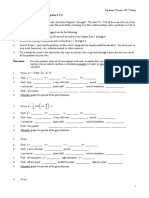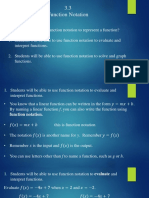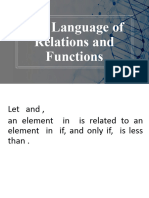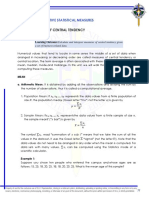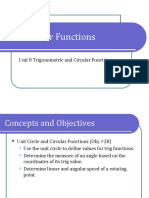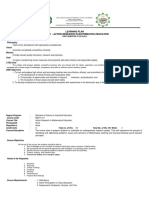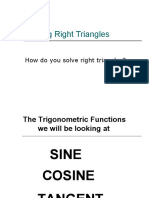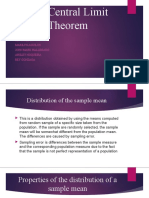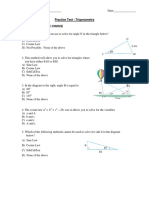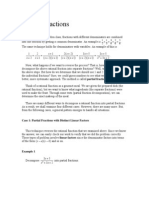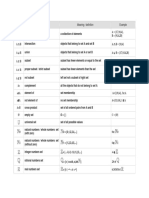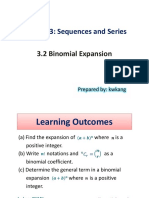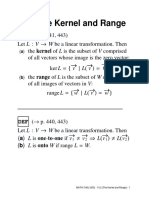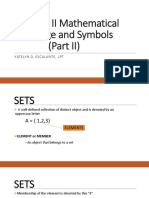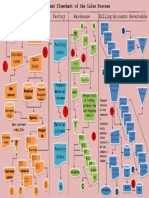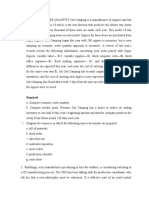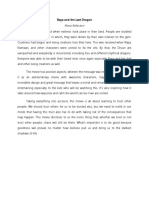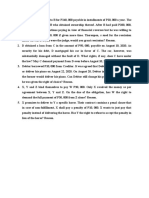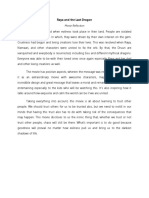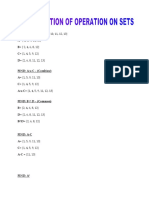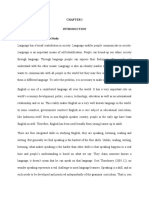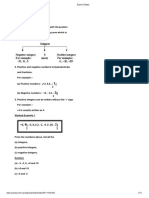0% found this document useful (0 votes)
225 views5 pagesActivity 3 - Mathematics Language and Symbols
Sets are well-defined collections of distinct objects that can be described using either a roster/tabular method that lists the elements or a rule/descriptive method that defines common characteristics. There are different types of sets including finite sets with a countable number of elements, infinite sets with an uncountable number, and empty/null sets with no elements. Relationships between sets include being equal, equivalent, joint, disjoint, or one being a subset of another. Operations on sets include union, intersection, difference, and complement.
Uploaded by
Khatlene AclaCopyright
© © All Rights Reserved
We take content rights seriously. If you suspect this is your content, claim it here.
Available Formats
Download as DOCX, PDF, TXT or read online on Scribd
0% found this document useful (0 votes)
225 views5 pagesActivity 3 - Mathematics Language and Symbols
Sets are well-defined collections of distinct objects that can be described using either a roster/tabular method that lists the elements or a rule/descriptive method that defines common characteristics. There are different types of sets including finite sets with a countable number of elements, infinite sets with an uncountable number, and empty/null sets with no elements. Relationships between sets include being equal, equivalent, joint, disjoint, or one being a subset of another. Operations on sets include union, intersection, difference, and complement.
Uploaded by
Khatlene AclaCopyright
© © All Rights Reserved
We take content rights seriously. If you suspect this is your content, claim it here.
Available Formats
Download as DOCX, PDF, TXT or read online on Scribd
/ 5



